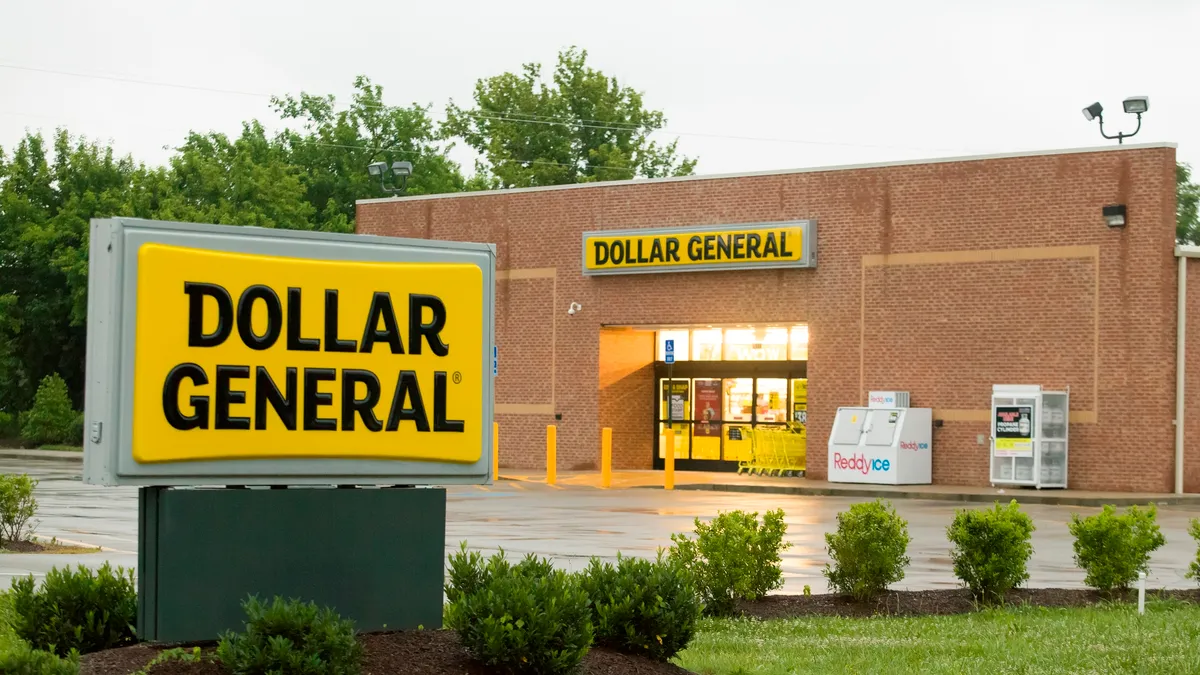Dive Brief:
-
Dollar General on Thursday reported fourth quarter net sales rose 2% to $6.1 billion, up from $6 billion in the year-ago quarter, including net sales of $398.7 million for an extra 53rd week in 2016 that hurt its 2017 fourth quarter growth rate by seven percentage points, according to a company press release.
-
Same-store sales rose 3.3% from the year-ago quarter, due to an increase in average transaction amount, partially offset by a slight decline in customer traffic. Same-store sales were fueled in particular by consumables and seasonal categories, partially offset by negative results in apparel and home, the company said.
-
Dollar General closed an incremental 35 stores during its fourth quarter, but all told last year opened a "company record" of 1,315 new stores. This year, the company will roll out another 900 new stores, remodel 1,000 stores and relocate 100 stores.
Dive Insight:
Dollar General’s same-store sales for its full fiscal year, which rose 2.7% from fiscal 2016, mark the company’s 28th consecutive year of positive same-store sales growth, CEO Todd Vasos said in a statement Thursday. But the same-store numbers, reflecting sales open at least a year, are almost losing meaning considering the retailer’s rapid pace of expansion.
Dollar General also expects net sales to increase about 9%, with same-store sales growth estimated to be in the mid-two percent range. The year’s operating margin rate is expected to be relatively unchanged compared to fiscal year 2017, the company said.
The positive report signals that "not all retail is hurting," Moody's Vice President Mickey Chadha said in an email to Retail Dive. "The convenience and value proposition offered by Dollar General coupled with its relative insulation from the increased competition from e-commerce will result in continued strength for Dollar General and the Dollar store sub-sector of retail as a whole."
Along with rival Dollar Tree, Dollar General is poised for ongoing success, in part because the American wage gap persists, leaving many living paycheck to paycheck and relying on their low food prices, according to retail analyst Nick Egelanian, president of retail development consultants SiteWorks International. Plus, Walmart’s distracted attention on e-commerce growth leaves them an opening, he said.
"The ‘dollar store’ industry has really become the ‘mini-grocery store’ industry today," he said. "The stores are now 90% (plus or minus) consumables and are geared to working class, budget-minded consumers."














